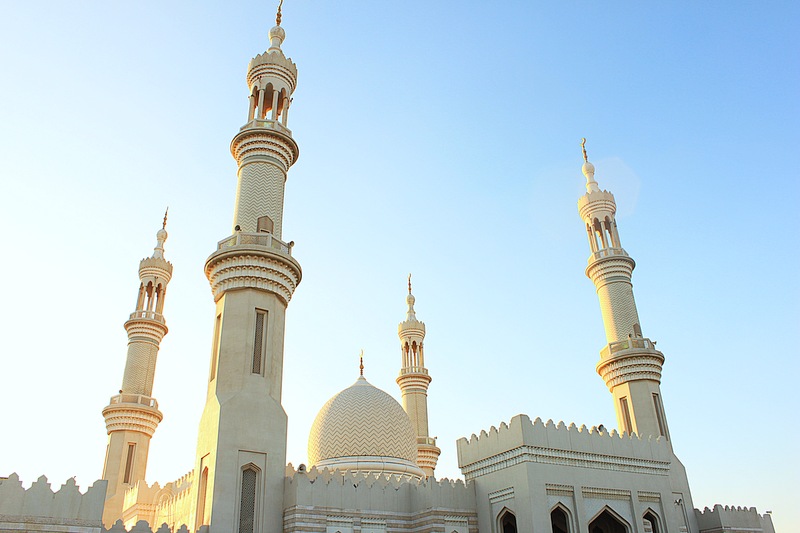The emirate Umm Al Quwain is the second smallest emirate after Ajman emirate with an area of approximately 770 km2, making up only about 1% of the UAE area. The emirate has approximately 56,000 inhabitants, which is the least of all seven emirates. The ruling sheikh since 2009 is Saud Bin Rashid Al Mu`alla. The name of the emirate is allegedly derived from the name Um Al Quwatain, which in translation means "mother of two forces" and is related to the fact that the inhabitants of this area were excellent sailors.
The capital lies on a small peninsula. In the city there is a traditional museum, fruit and vegetable market and a smaller tourist center. The coastal promenade Corniche is particularly popular. Umm Al Quwain emirate expanded its port, has income mainly from fishing and has a large poultry farm. It also supplies other emirates with seafood. Majid Al Mualla, the founder of the ruling Al Mualla line from the Al `Ali clan, established an independent sheikhdom (state entity) in Umm al-Quwain. January 8, 1820 Sheikh Abdullah I. signed a treaty with the United Kingdom accepting the protection protectorate against the Turks. December 2, 1971 Umm Al Quwain became part of the federation of United Arab Emirates.
Umm Al Quwain is the economically most backward of all emirates. Unlike Dubai and Abu Dhabi, the emirate does not have oil and therefore not much has changed in the last decades. But this is the main charm and appeal of this emirate. Life cannot be compared at all with Dubai or the capital Abu Dhabi. In the old part of Umm Al Quwain city, which consists of several streets, time seems to have stopped. Life flows here at a slow pace. In the old town, around the fortress, elements of original architecture are visible. Umm Al Quwain is approximately 75 km from Dubai.
 Charming mosque in the old town.
Charming mosque in the old town.

















